-
CATEGORY ::
- All Seeds /
- All Flower Seeds /
- All Dahlia Seeds
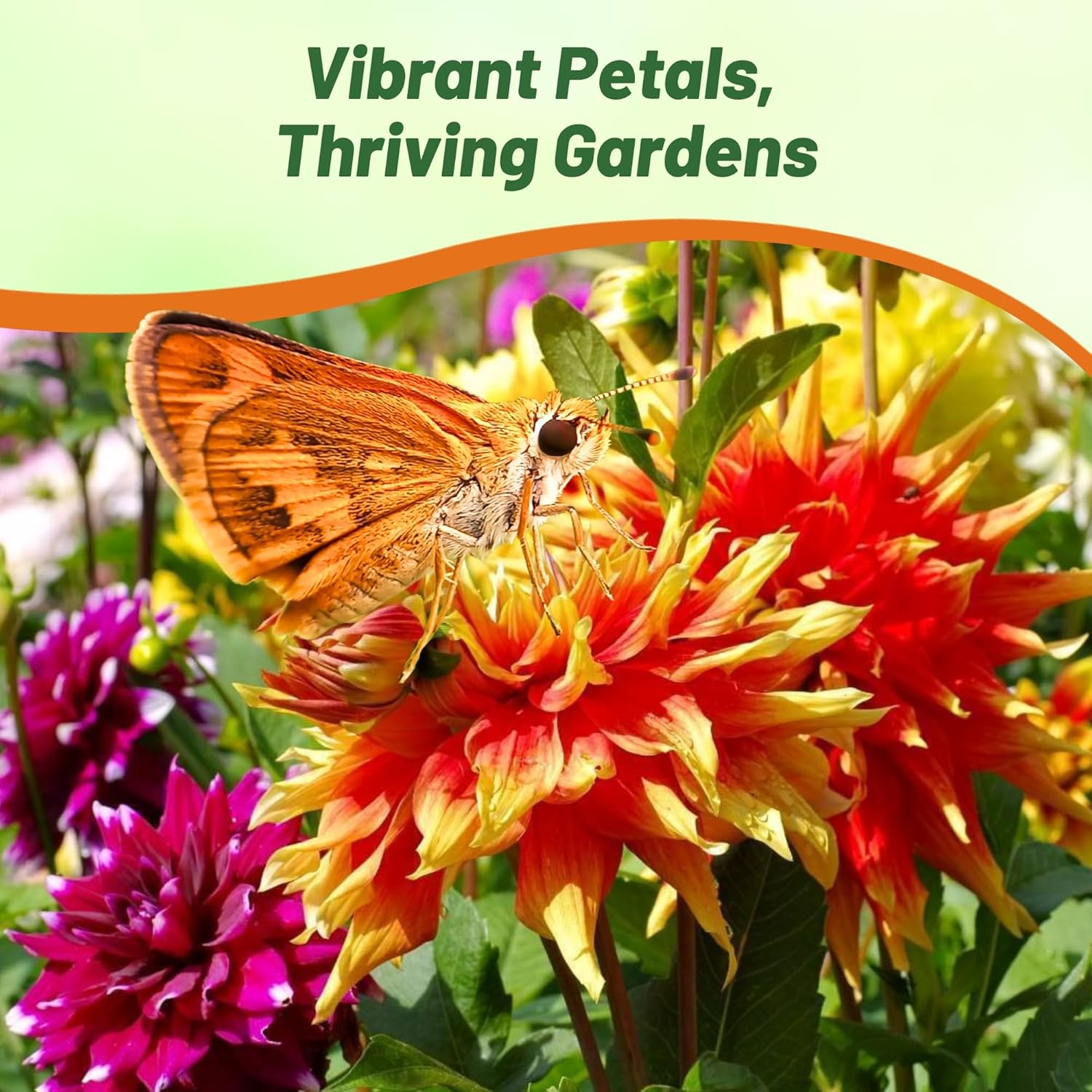

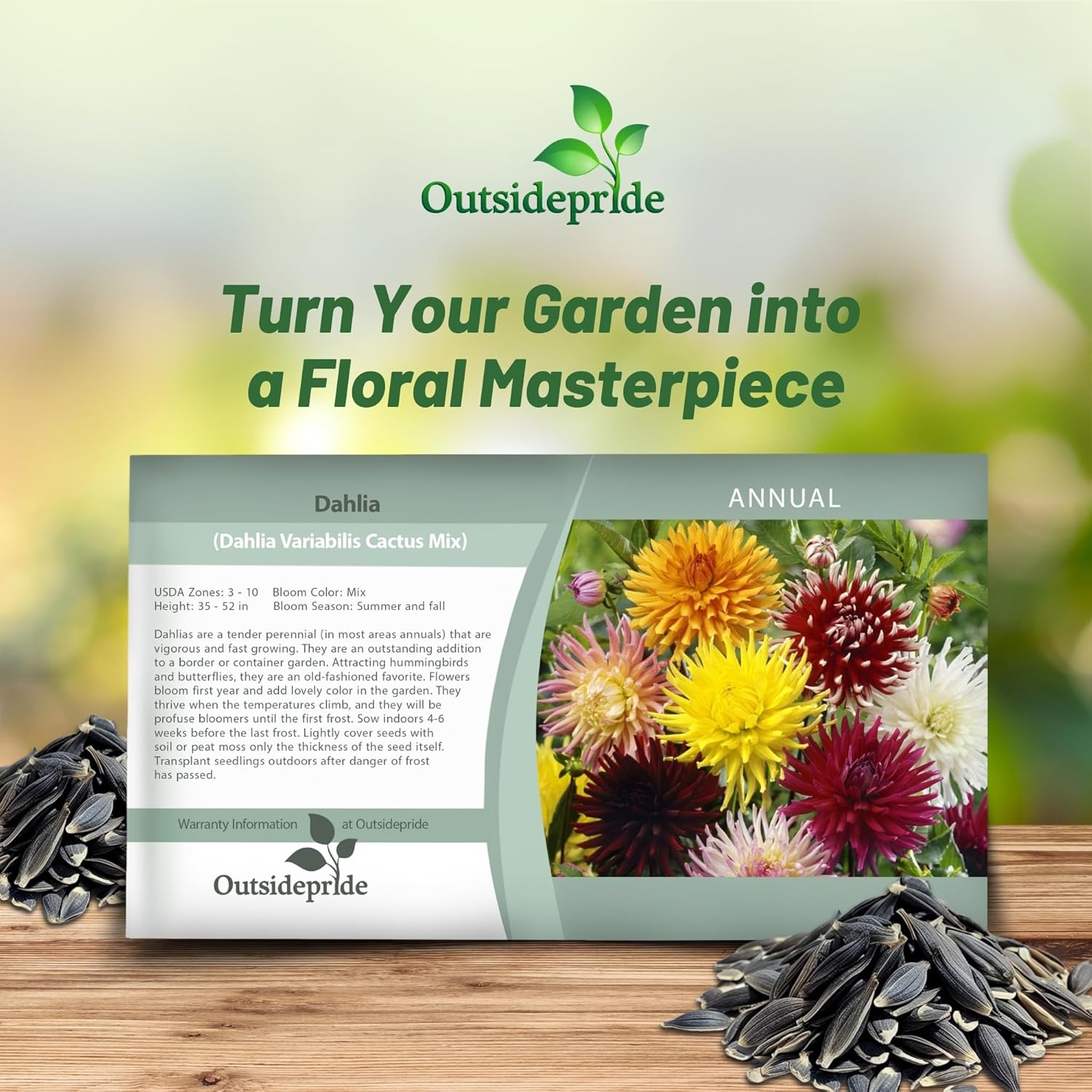
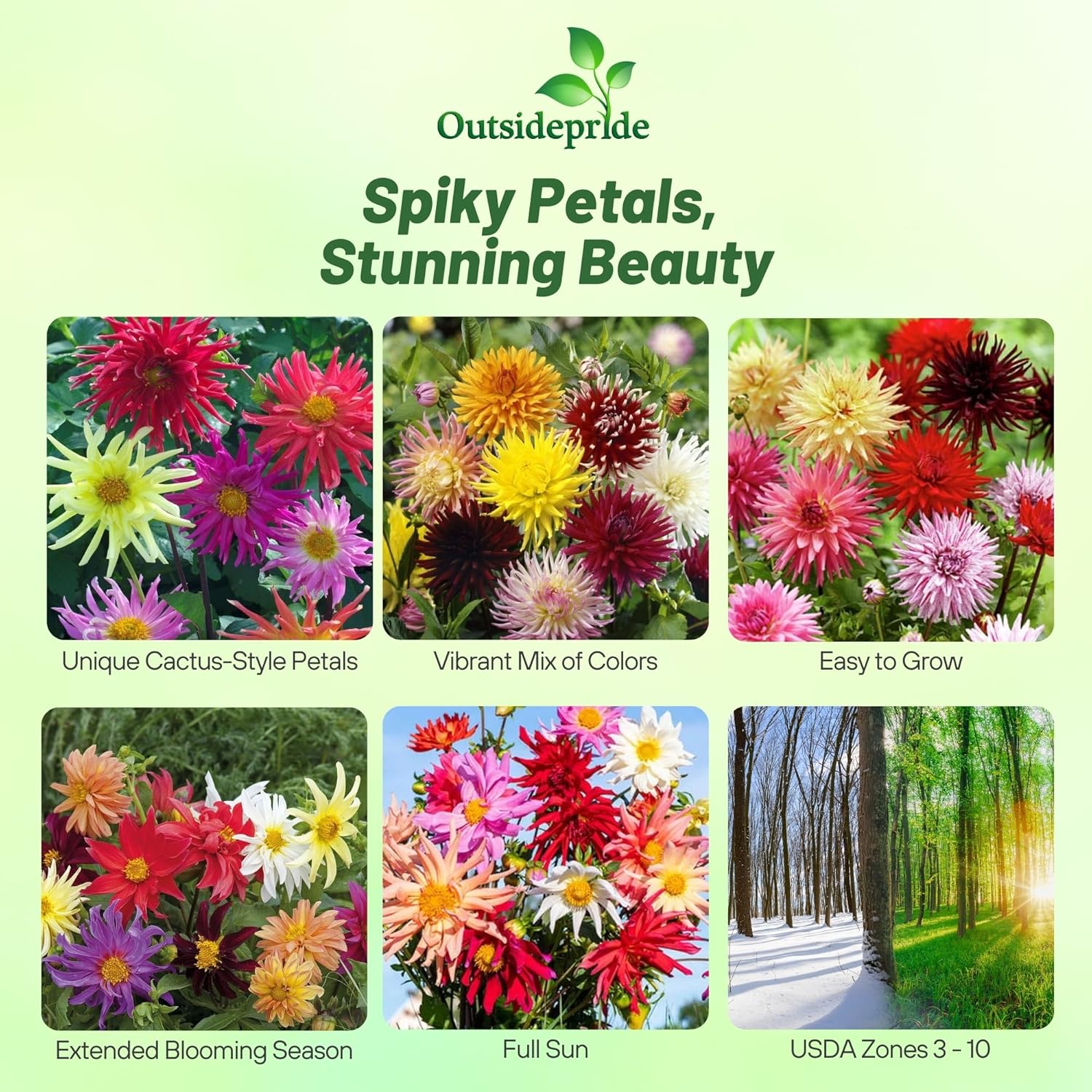

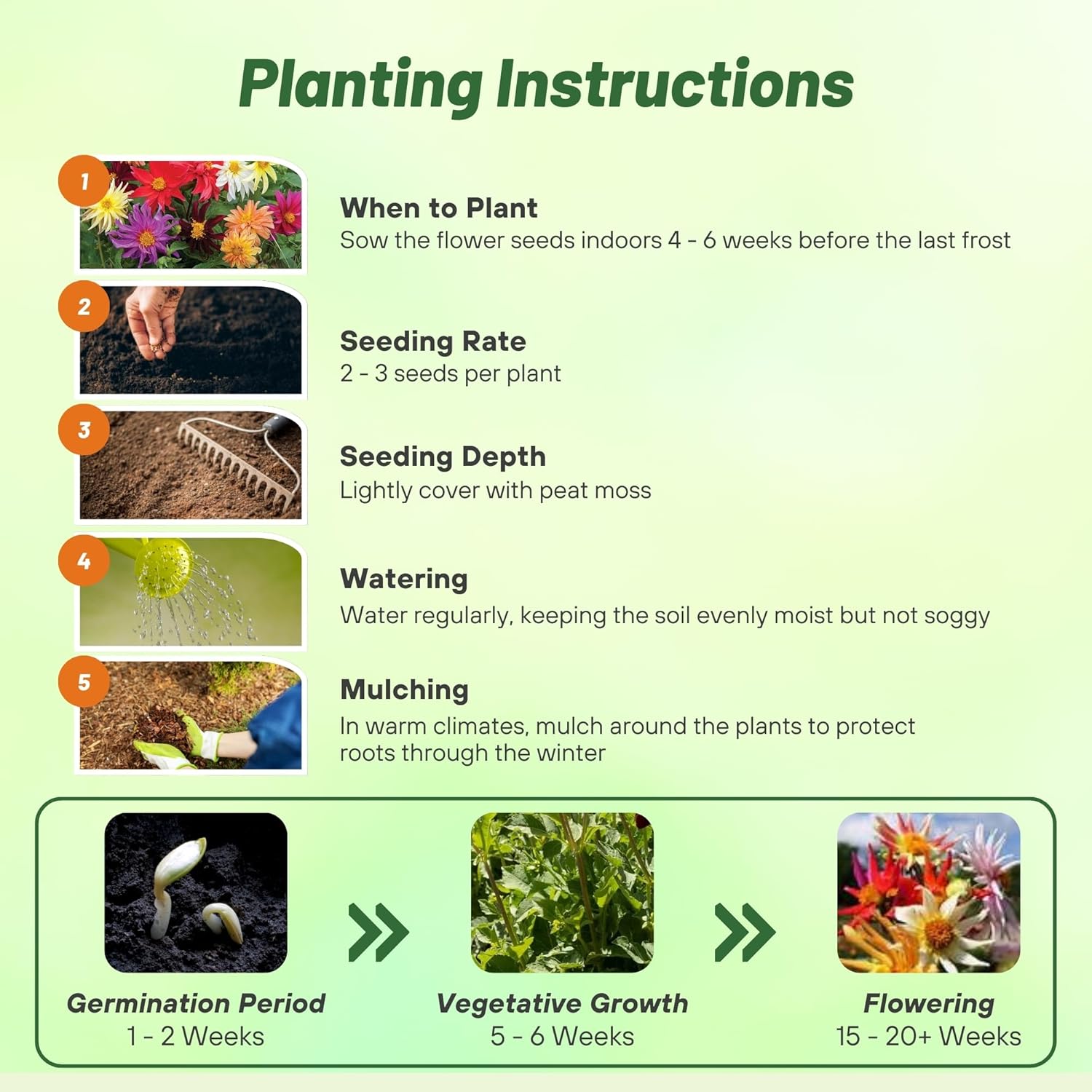
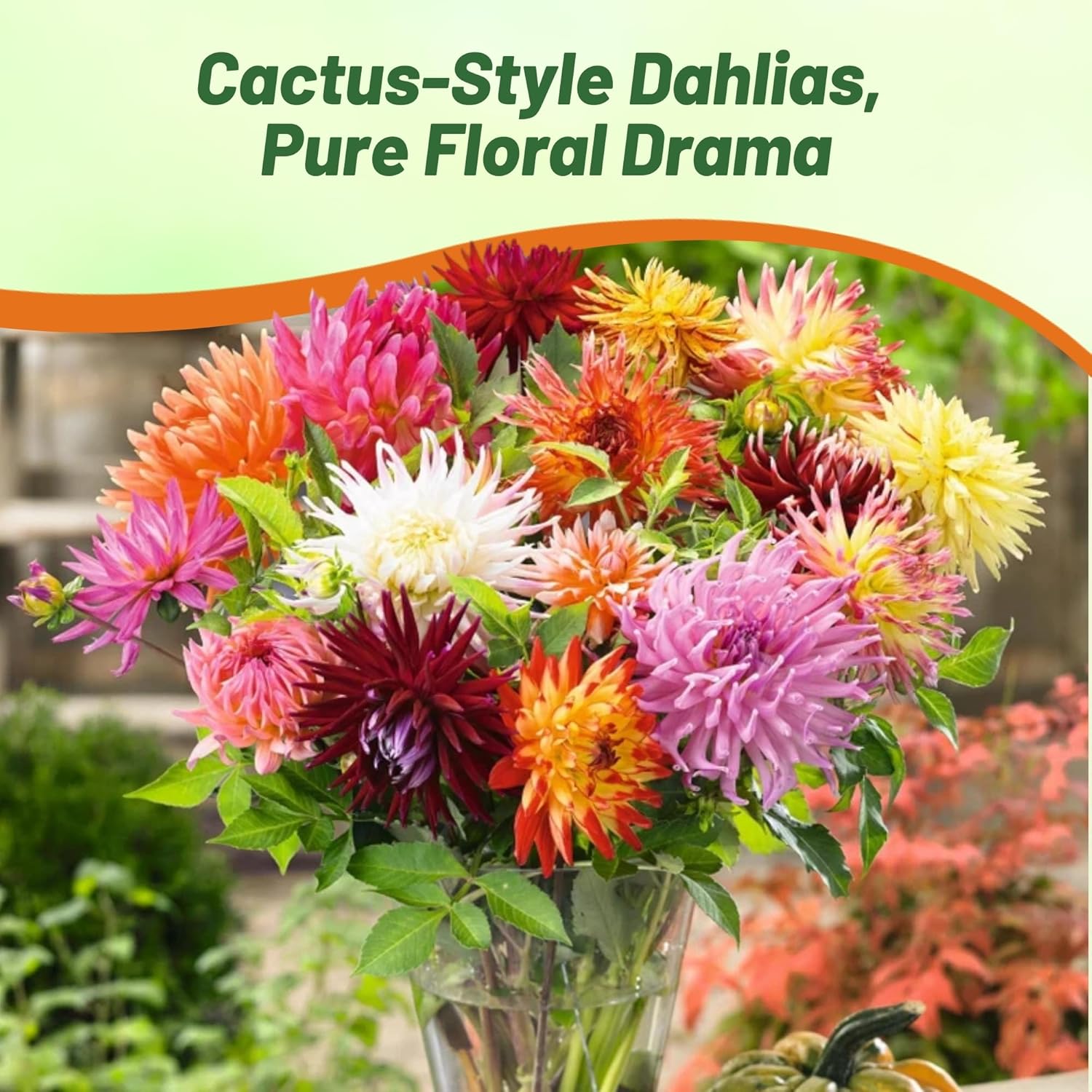


Dahlia Seeds - Cactus Mix
SEASON
Annual
USDA ZONES
3 - 10
HEIGHT
36 - 52 inches
BLOOM SEASON
Summer and fall
BLOOM COLOR
Mix
ENVIRONMENT
Full sun
SOIL TYPE
Well-drained, pH 5.5 - 6.5
DEER RESISTANT
No
HOUSE PLANT
No
SEASON
Annual
USDA ZONES
3 - 10
HEIGHT
20 - 24 inches
BLOOM SEASON
Summer and fall
BLOOM COLOR
Mix
ENVIRONMENT
Full sun
SOIL TYPE
Well-drained, pH 5.5 - 6.5
DEER RESISTANT
No
HOUSE PLANT
No
SEASON
Annual
USDA ZONES
3 - 10
HEIGHT
18 - 20 inches
BLOOM SEASON
Summer and fall
BLOOM COLOR
Mix
ENVIRONMENT
Full sun
SOIL TYPE
Well-drained, pH 5.5 - 6.5
DEER RESISTANT
No
HOUSE PLANT
No
SEASON
Annual
USDA ZONES
3 - 10
HEIGHT
18 - 20 inches
BLOOM SEASON
Summer and fall
BLOOM COLOR
Red
ENVIRONMENT
Full sun
SOIL TYPE
Well-drained, pH 5.5 - 6.5
DEER RESISTANT
No
HOUSE PLANT
No
SEASON
Annual
USDA ZONES
3 - 10
HEIGHT
18 - 20 inches
BLOOM SEASON
Summer and fall
BLOOM COLOR
Rose
ENVIRONMENT
Full sun
SOIL TYPE
Well-drained, pH 5.5 - 6.5
DEER RESISTANT
No
HOUSE PLANT
No
SEASON
Annual
USDA ZONES
3 - 10
HEIGHT
18 - 20 inches
BLOOM SEASON
Summer and fall
BLOOM COLOR
White
ENVIRONMENT
Full sun
SOIL TYPE
Well-drained, pH 5.5 - 6.5
DEER RESISTANT
No
HOUSE PLANT
No
SEASON
Annual
USDA ZONES
3 - 10
HEIGHT
36 - 48 inches
BLOOM SEASON
Summer and fall
BLOOM COLOR
Mix
ENVIRONMENT
Full sun
SOIL TYPE
Well-drained, pH 5.5 - 6.5
DEER RESISTANT
No
HOUSE PLANT
No
SEASON
Annual
USDA ZONES
3 - 10
HEIGHT
16 - 24 inches
BLOOM SEASON
Summer and fall
BLOOM COLOR
Mix
ENVIRONMENT
Full sun
SOIL TYPE
Well-drained, pH 5.5 - 6.5
DEER RESISTANT
No
HOUSE PLANT
No
About...
Dahlia (Dahlia Variabilis Cactus Mix) - Start Dahlia seeds and grow one of the most rewarding summer flowers of all. They are easy to grow from flower seed, and the results are spectacular! With their mix of colors and pointed petals, these flowers look like fireworks!
MORE DAHLIA OPTIONS
Planting Directions
TEMPERATURE
70 - 85F
AVERAGE GERM TIME
7 - 21 days
LIGHT REQUIRED
No
DEPTH
Lightly cover with peat moss
SOWING RATE
2 - 3 seeds per plant
MOISTURE
Keep moist until germination
PLANT SPACING
24 inches

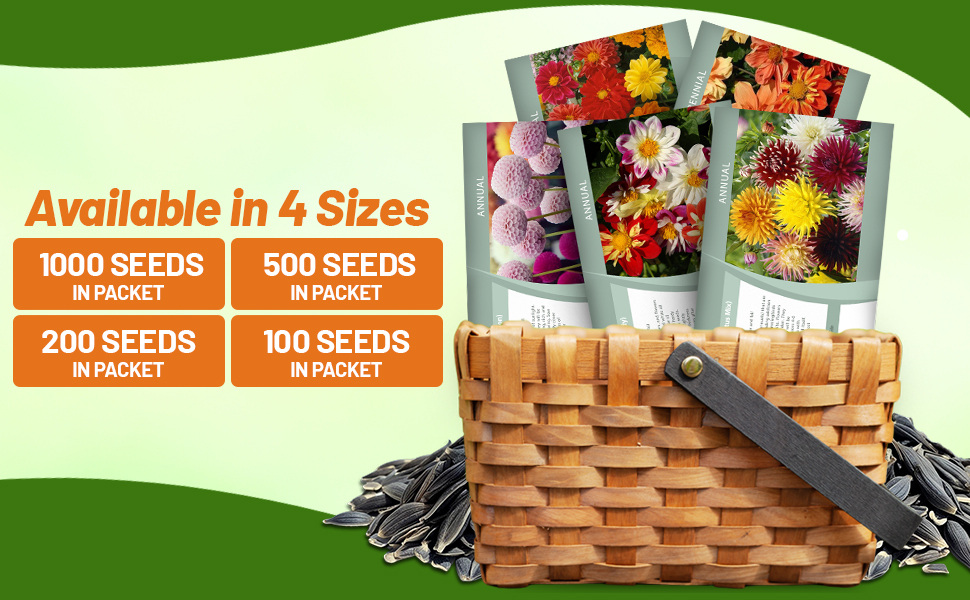
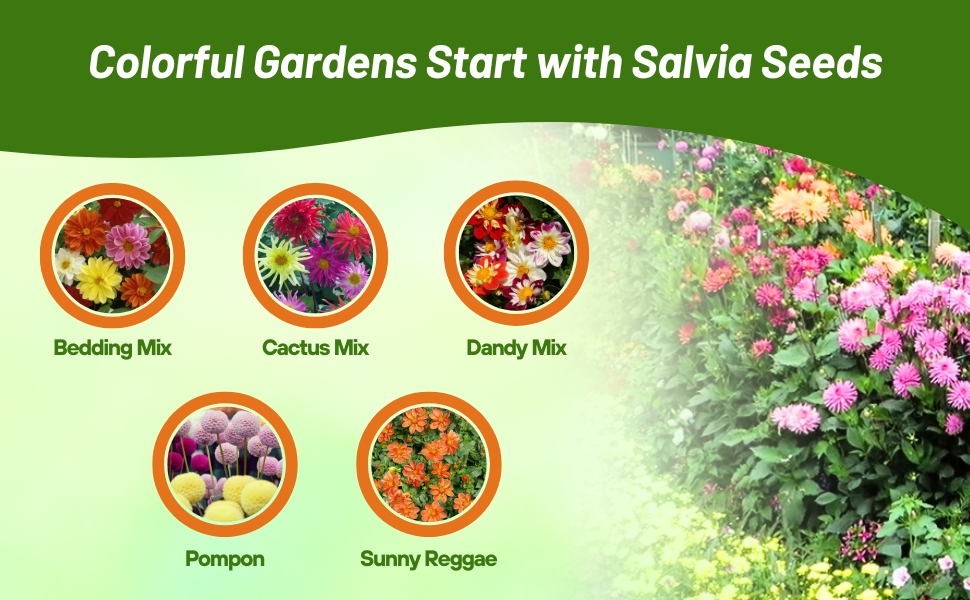
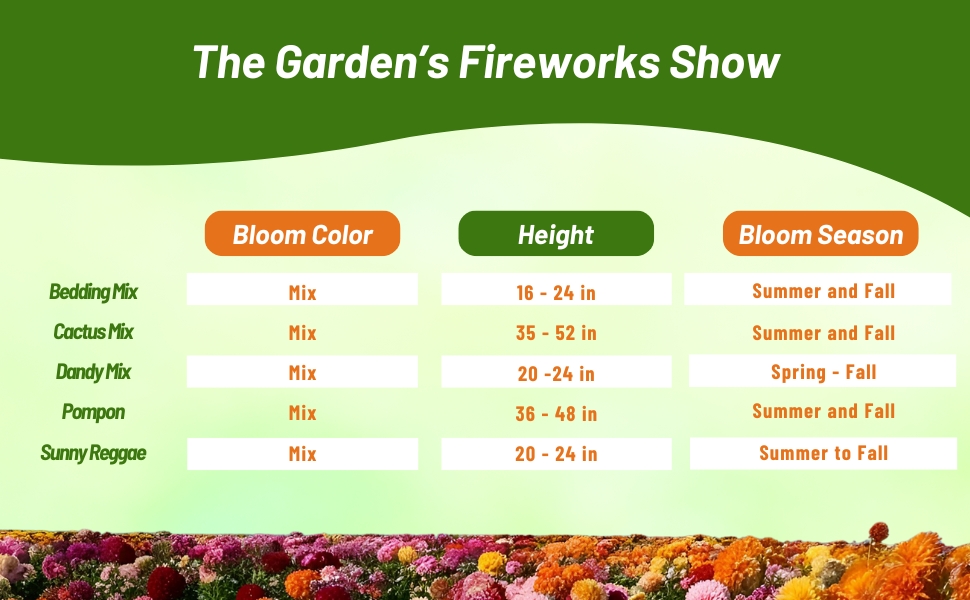
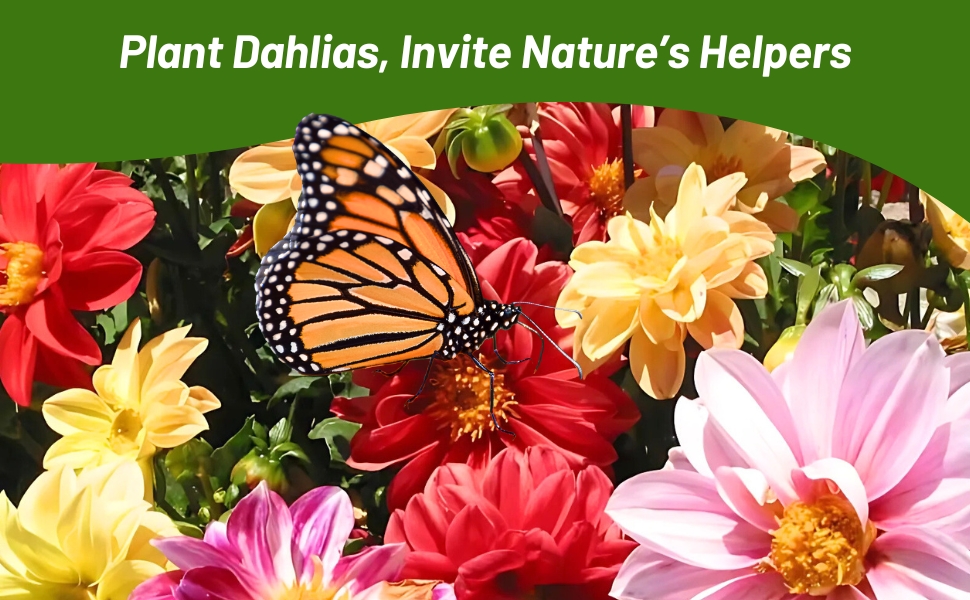
Dahlia (Dahlia Variabilis Cactus Mix) - Start Dahlia seeds and grow one of the most rewarding summer flowers of all. They are easy to grow from flower seed, and the results are spectacular! With their mix of colors and pointed petals, these flowers look like fireworks! This variety often grows very tall, reaching 36 - 52 inches. The Cactus Dahlia take their name from their unusual elongated and pointed, narrow petals. These flowers quickly becomes a big and bold statement for the late summer garden, and they make an excellent long-stemmed cut flower!
Dahlias are a tender perennial (in most areas annuals) that are vigorous and fast growing. They are an outstanding addition to the flower border or container garden. Attracting hummingbirds and butterflies, they are an old-fashioned favorite. Flowers bloom first year and add a lovely spot of color in the garden. They thrive when the temperatures climb, and they will be profuse bloomers until the first frost. Sow Dahlia seeds indoors 4 - 6 weeks before the last frost. Lightly cover the flower seeds with soil or peat moss only the thickness of the seed itself. Transplant seedlings outdoors after danger of frost has passed.
Common Questions
When you should plant Dahlia seeds?
When growing Dahlias from seed, you want to plant dahlia seeds indoors about 6-8 weeks prior to your last frost date. If you do not know your growing zone’s last frost date, you can find it here. This will give your dahlia seeds time to start growing and to be ready to plant outside. You do not want to transplant your dahlia starts outside until all danger of frost has passed.
You can use paper towels to germinate Dahlia seeds?
For the first method, start by taking two wet paper towels and placing the dahlia seeds flat on one. Cover the dahlia seeds with one of the paper towels. Place the paper towels and seeds inside a zip lock bag. Lay the zip lock bag flat on the top of your refrigerator. Leave the seeds for 3-5 days. After that time, start checking the bag daily for signs of germination. Once the seeds have germinated, carefully plant the seedlings in a seed tray. Place the tray of seedlings under grow lights. I check the seeds starting at day 3 and plant the ones that have germinated. I then continue to check daily for about 2 weeks for germination. After that point, I toss the ones that have not germinated.
When do I transplant my Dahlia seedlings?
Once your young seedlings have true leaves growing, you will want to transplant them into larger containers. This is important so that your dahlia plants do not become root bound. Continue growing your dahlia plants indoors (or inside a heated greenhouse) until all dangers of frost have passed. Once the risk of frost has passed, you can safely plant your dahlias outdoors in a sunny spot with well-drained soil. Be sure to space your plants 12-18” apart to allow for enough space for the tubers to form. For more detailed planting instructions, check out how to grow Dahlia seed on our resources link.
How do I overwintering Dahlias?
In many parts of the country, dahlias will not survive if left in the garden over winter if it is very frosty or wet. It is therefore best to lift the tubers once the foliage has been blackened by frost. Cut the stems back to about 5 inches, then, with a garden fork, gently lift the tuber and remove the soil with your fingers. Place tubers upside down in a newspaper-lined tray so that they can dry out for a couple of weeks in a dry place. Once dry, place the tubers in a cool, frost-free place in a shallow tray of dry compost or horticultural sand. Don’t water them. They don’t need light during this time, making a dark garage the perfect store. Leave them here until it's time to pot them up again, in late March or early spring. If you live in a mild area with well drained soil, or don't have the space to lift and store dahlia tubers, you can cover the soil with a thick layer of mushroom compost and/straw, to prevent frost from penetrating the tubers. In spring simply rake away the excess compost.
How do I divide Dahlia tubers to overwinter?
Whether you choose to divide dahlia tubers before storing them for the winter or in the early spring, be sure to split them every year because of how quickly they grow. If they get too large, they will rot or become too heavy to lift and store. After digging up your tubers, split the tubers in half with sharp pruners or a sharp knife so the pieces are easier to work with. Remember that for a tuber to be viable, the eye or eyes must be connected to an unbroken tuber. Wash the clumps to remove all the excess soil. Dip the clumps into a 5% bleach-95% water solution and lay them out to dry in a cool place, such as a basement or garage for a couple of days.
What happens if you don’t dig up Dahlias?
If you live in an area where dahlias are not hardy and don’t dig them up in the fall, the tubers may be damaged or killed by freezing temperatures. This can result in the loss of the entire plant because the tubers won’t be able to produce new growth the next spring.
How do you keep Dahlias blooming?
Keeping your dahlias in a spot that gets full sunlight is ideal, though partially shaded spots can also nurture dahlia blooms. They prefer rich and well-drained soil, however, keep in mind that the soil should be evenly moist, but not excessively wet, or the roots may rot.
Do Dahlia flowers bloom the first year they are planted?
It can sometimes feel like an eternity waiting for your dahlia seeds to bloom with flowers. Dahlia seeds usually take 100-120 days to bloom. Depending upon when you sow your seeds, you will likely see your first dahlia flowers in mid-July to early August.
How long do Dahlia plants last?
With fertile soil, proper water and consistent deadheading, dahlia plants can flower for up to 4 months. This is dependent on the zone and current weather you are experiencing within your zone.
Do Dahlias come back year after year?
Yes, since dahlias are perennials, they are able to resprout from their underground tubers to bloom in the summertime every year. If you live in a warm climate, the chances of dahlias coming back are even greater. In warmer climates, such as USDA hardiness zones 8-11, dahlias can be left in the ground over the winter and may return the following year. However, in colder climates with freezing temperatures, dahlia tubers can be damaged or even killed if not taken out of the ground and stored indoors for the winter.
Help! My Dahlia stem snapped off in the wind!
Don't worry, while this is frustrating, if the tubers are healthy then more stems will grow from the base. Give the plant a good drink and snip the severed stem down to a pair of leaf nodes, and be patient.
Do Dahlias do better in pots or the ground?
Dahlias can be grown successfully in both pots and the ground. Your growing method choice depends on personal preference, available space, and growing conditions.
Do I need to do anything different if growing Dahlias In containers?
Small, compact dahlia varieties often do very well in pots and containers. We would recommend you do not plant large dahlia varieties with heavy heads in containers. There are a few benefits to growing dahlias in pots. They can be easily overwintered as you can pull your container in from the cold during the winter months. It is also easier to keep slugs and snails away from your plants. Dahlias grown in pots need to be watered more regularly, especially in hot weather. They also need to be fertilized more frequently because the fertilizer drains from the soil more quickly.
Will Dahlia seeds turn into tubers?
At the end of the growing seasons your dahlia seeds will have produced viable dahlia tubers that you can dig up and save for the following season. These dahlia tubers will produce identical plants to what was grown this year. Because dahlias are tender perennials (or annuals in some zones), you should dig up and store your tubers over winter.
Help! My Dahlia doesn't have any tubers?
Dahlias grown from seed typically develop a tuber by the end of the growing season. However, if there is no tuber, simply dig up the rootball and pot the dahlia up, watering it to settle it in. Then keep it in an unheated greenhouse or similar, where it can continue growing without threat of frost. Water sparingly so the compost doesn't dry out, and then replant after frost has passed in spring. It should develop tubers the following year.
When do I pinch Dahlias?
An important step in caring for dahlias is pinching the center shoot when the plant is young. After dahlia plants reach about 1 foot tall, pinch them by snipping out 3-4 inches of the growing center branch. This process will cause the plant to redirect its energy into producing more side shoots, encouraging bushier plants, as well as increasing flower production and overall stem length.
What happens if you don’t pinch Dahlias?
If you don’t pinch your dahlias they will still grow and produce blooms. However, they may be less full than if you had pinched them. This is because the plant will grow taller and more spindly, rather than branching out and producing new shoots.
When to cut Dahlia plants?
The best time to cut dahlias is in the early morning before the heat of the day to keep them from shock and wilting. Since dahlias don’t open much after being harvested, it’s important to pick them almost fully bloomed. The best dahlias to pick have just opened, with firm strong petals. If you cut flowers that have already showed signs of wilting you will end up with petals all over the counter in short order!
How to cut Dahlia plants?
When cutting dahlias, use sharp, clean pruners or shears to make a clean cut at a 45° angle, just above the set of leaves or nodes. This will encourage the plant to produce more blooms and prevent damage to the plant. Place the cut flowers in a bucket of cool water as you are cutting from the garden. Remove all leaves from the stems and place the dahlias in a vase of water with flower food. Don’t use a flower for your arrangement if the back of the flower head looks like the petals are browning and dehydrated. Set your flower vase in a cool area out of sunlight.
How long do cut Dahlia flowers last?
The cut flowers should last anywhere from 5-7 days if properly cared for. They wilt more quickly than many flowers, but their life can be extended by cutting at the right time of day and keeping them out of heat.
Can Dahlias be used for cut flowers?
Dahlias make wonderful cut flowers for bouquets and arrangements. Keep in mind they have a very short vase life compared to many flowers, however they bloom so well that you can create bouquets all summer long!
Help! My dahlia leaves are curled and distorted!
Dahlia leaves can curl and become distorted for a number of reasons, including attacks from aphids and red spider mites, to mosaic virus and even botrytis. Inspect the plant thoroughly for signs of invertebrates and remove them, along with the leaves, and the plant should recover. If there are no signs of invertebrates then mosaic virus or botrytis may be the cause. There's no cure for this, so, sadly, you will have to destroy the plant.
Do you soak Dahlias before planting?
It’s not necessary to soak dahlias before planting because they should absorb the moisture they need from the soil. However, soaking the tubers for a short period before planting can help hydrate them and encourage the growth of healthy roots.
Why are my Dahlias all leaves and no flowers?
There could be many reasons why your dahlias are not flowering: lack of sunlight, overfertilization, improper planting depth, lack of water, or pest or disease issues.
Should I remove lower leaves from Dahlias?
Removing lower leaves from dahlias can be beneficial for promoting airflow and preventing pest and disease issues. Avoid removing more than one-third of the plant’s foliage at once to make sure the plant can still produce the energy it needs to grow and bloom successfully. Leaves are essential for photosynthesis and providing energy to the plant so don’t go overboard.
Planting Directions
TEMPERATURE
70 - 85F
AVERAGE GERM TIME
7 - 21 days
LIGHT REQUIRED
No
DEPTH
Lightly cover with peat moss
SOWING RATE
2 - 3 seeds per plant
MOISTURE
Keep moist until germination
PLANT SPACING
10 - 14 inches
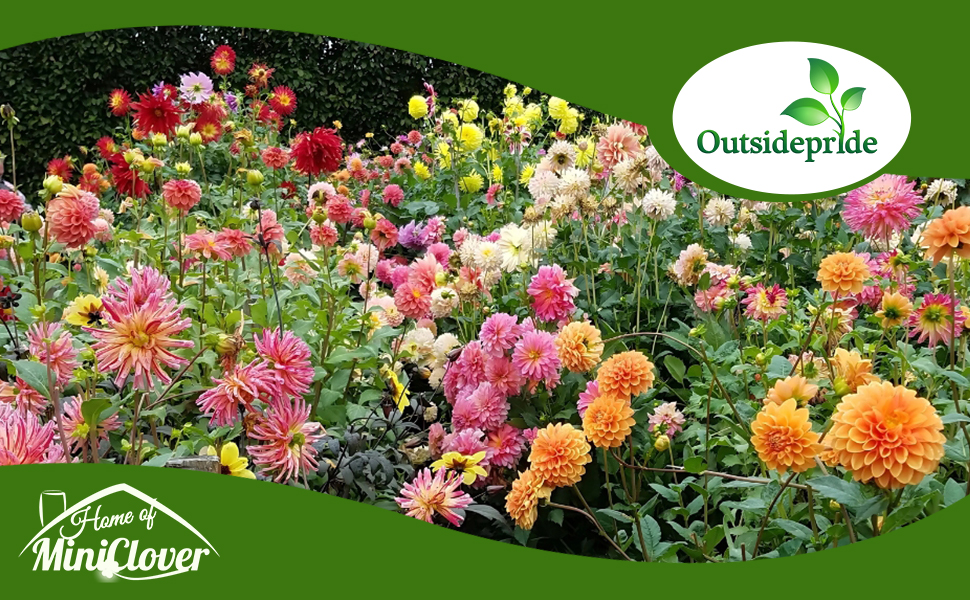
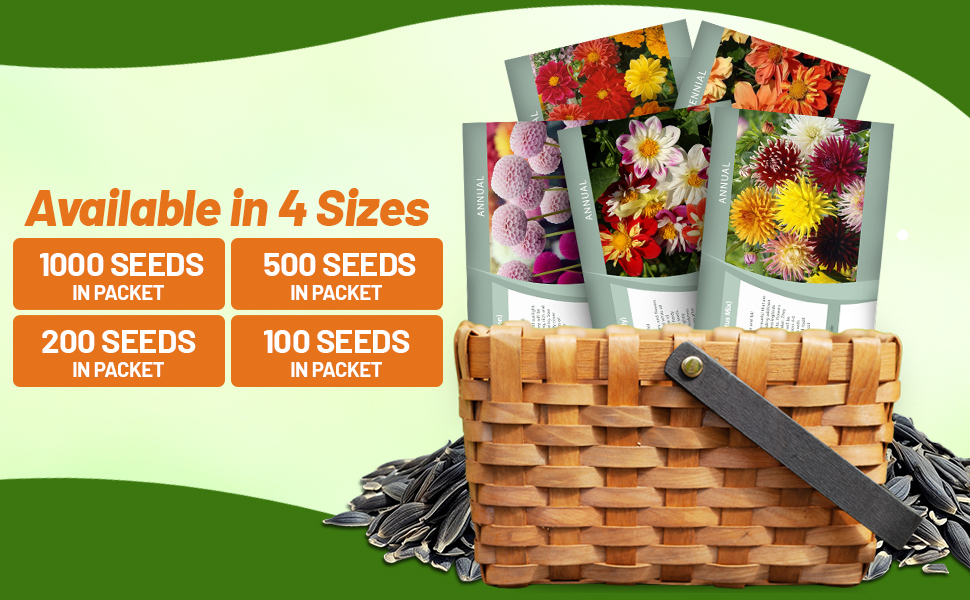
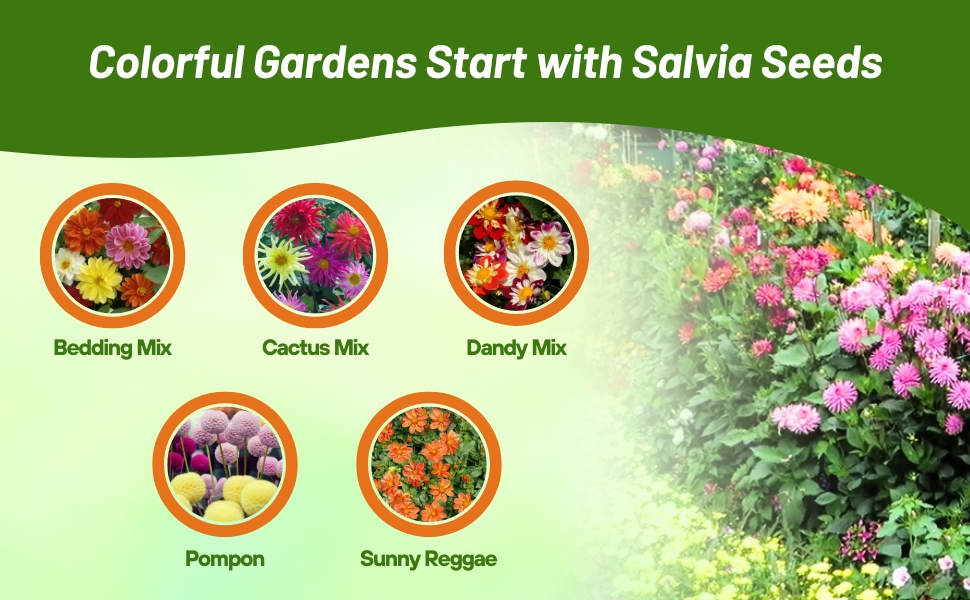
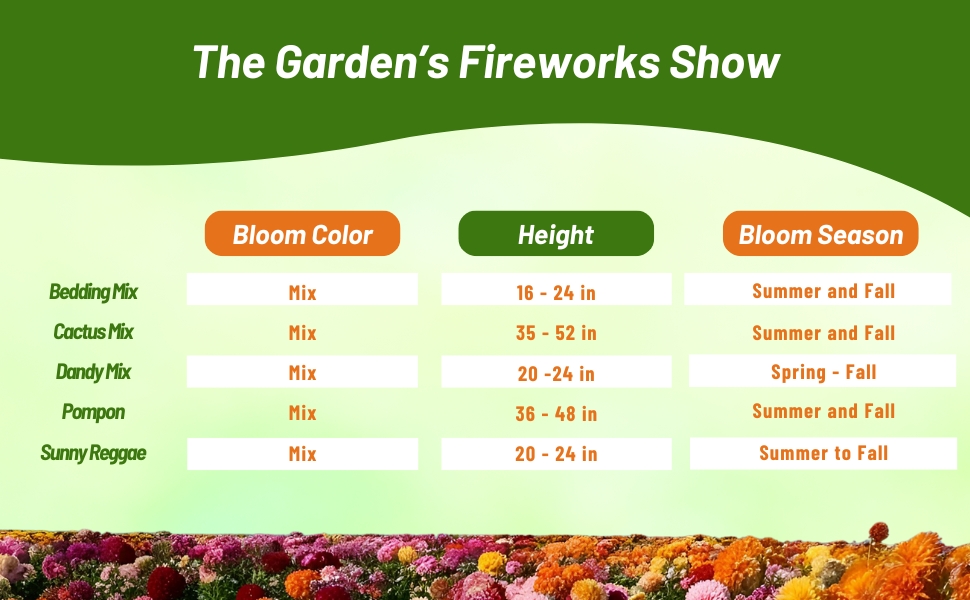
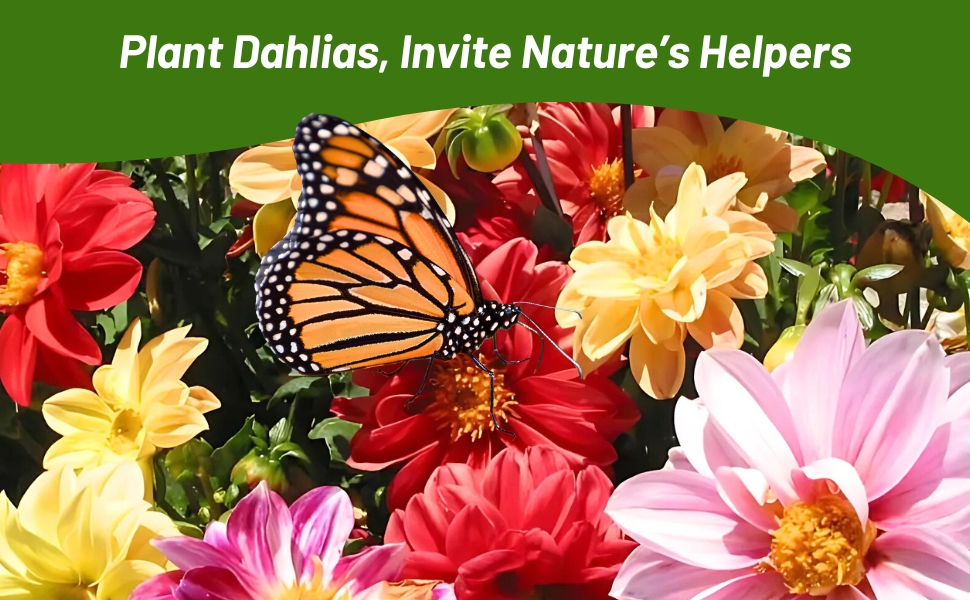
Dahlia (Dahlia Variabilis Dandy) - Grow these delightful flowers from Dahlia flower seeds! The Dandy Mix produces dwarf, bushy flowers with little collars, and the flowers come in many shades of red, yellow, orange and white all with a white matching or contrasting inner collar of quilled petals.
Common Questions
When you should plant Dahlia seeds?
When growing dahlias from seed, you want to plant dahlia seeds indoors about 6-8 weeks prior to your last frost date. If you do not know your growing zone’s last frost date, you can find it here. This will give your dahlia seeds time to start growing and to be ready to plant outside. You do not want to transplant your dahlia starts outside until all danger of frost has passed.
You can use paper towels to germinate Dahlia seeds?
For the first method, start by taking two wet paper towels and placing the dahlia seeds flat on one. Cover the dahlia seeds with one of the paper towels. Place the paper towels and seeds inside a zip lock bag. Lay the zip lock bag flat on the top of your refrigerator. Leave the seeds for 3-5 days. After that time, start checking the bag daily for signs of germination. Once the seeds have germinated, carefully plant the seedlings in a seed tray. Place the tray of seedlings under grow lights. I check the seeds starting at day 3 and plant the ones that have germinated. I then continue to check daily for about 2 weeks for germination. After that point, I toss the ones that have not germinated.
When do I transplant my Dahlia seedlings?
Once your young seedlings have true leaves growing, you will want to transplant them into larger containers. This is important so that your dahlia plants do not become root bound. Continue growing your dahlia plants indoors (or inside a heated greenhouse) until all dangers of frost have passed. Once the risk of frost has passed, you can safely plant your dahlias outdoors in a sunny spot with well-drained soil. Be sure to space your plants 12-18” apart to allow for enough space for the tubers to form. For more detailed planting instructions, check out how to grow Dahlia seed on our resources link.
How do I overwintering Dahlias?
In many parts of the country, dahlias will not survive if left in the garden over winter if it is very frosty or wet. It is therefore best to lift the tubers once the foliage has been blackened by frost. Cut the stems back to about 5 inches, then, with a garden folk, gently lift the tuber and remove the soil with your fingers. Place tubers upside down in a newspaper-lined tray so that they can dry out for a couple of weeks in a dry place. Once dry, place the tubers in a cool, frost-free place in a shallow tray of dry compost or horticultural sand. Don’t water them. They don’t need light during this time, making a dark garage the perfect store. Leave them here until it's time to pot them up again, in late March or early spring. If you live in a mild area with well drained soil, or don't have the space to lift and store dahlia tubers, you can cover the soil with a thick layer of mushroom compost and/straw, to prevent frost from penetrating the tubers. In spring simply rake away the excess compost.
How do I divide Dahlia tubers to overwinter?
Whether you choose to divide dahlia tubers before storing them for the winter or in the early spring, be sure to split them every year because of how quickly they grow. If they get too large, they will rot or become too heavy to lift and store. After digging up your tubers, split the tubers in half with sharp pruners or a sharp knife so the pieces are easier to work with. Remember that for a tuber to be viable, the eye or eyes must be connected to an unbroken tuber. Wash the clumps to remove all the excess soil. Dip the clumps into a 5% bleach-95% water solution and lay them out to dry in a cool place, such as a basement or garage for a couple of days.
What happens if you don’t dig up Dahlias?
If you live in an area where dahlias are not hardy and don’t dig them up in the fall, the tubers may be damaged or killed by freezing temperatures. This can result in the loss of the entire plant because the tubers won’t be able to produce new growth the next spring.
How do you keep Dahlias blooming?
Keeping your dahlias in a spot that gets full sunlight is ideal, though partially shaded spots can also nurture dahlia blooms. They prefer rich and well-drained soil, however, keep in mind that the soil should be evenly moist, but not excessively wet, or the roots may rot.
Bloom Time In most climates, dahlias begin blooming in mid summer and continue to bloom well into fall, typically mid July through late October. These are a cut and come again flower, and they will continue to thrive and bloom all summer long with proper deadheading and the right amount of nutrients and sunlight.
In most climates, dahlias begin blooming in mid summer and continue to bloom well into fall, typically mid July through late October. These are a cut and come again flower, and they will continue to thrive and bloom all summer long with proper deadheading and the right amount of nutrients and sunlight.
Do Dahlia flowers bloom the first year they are planted?
It can sometimes feel like an eternity waiting for your dahlia seeds to bloom with flowers. Dahlia seeds usually take 100-120 days to bloom. Depending upon when you sow your seeds, you will likely see your first dahlia flowers in mid-July to early August.
How long do Dahlia plants last?
With fertile soil, proper water and consistent deadheading, dahlia plants can flower for up to 4 months. This is dependent on the zone and current weather you are experiencing within your zone.
Do Dahlias come back year after year?
Yes, since dahlias are perennials, they are able to resprout from their underground tubers to bloom in the summertime every year. If you live in a warm climate, the chances of dahlias coming back are even greater. In warmer climates, such as USDA hardiness zones 8-11, dahlias can be left in the ground over the winter and may return the following year. However, in colder climates with freezing temperatures, dahlia tubers can be damaged or even killed if not taken out of the ground and stored indoors for the winter.
Help! My Dahlia stem snapped off in the wind!
Don't worry, while this is frustrating, if the tubers are healthy then more stems will grow from the base. Give the plant a good drink and snip the severed stem down to a pair of leaf nodes, and be patient.
What size pot is best for growing dahlias?
Dahlias vary in size but generally a pot with a height and diameter of around 14 inches is sufficient for a dahlia up to 3 1/2 feet in height. Plant one dahlia plant per pot and keep it well watered. Bear in mind that you will need to stake your plant, and it's best to avoid growing very tall dahlias in pots.
Do Dahlias do better in pots or the ground?
Dahlias can be grown successfully in both pots and the ground. Your growing method choice depends on personal preference, available space, and growing conditions.
Do I need to do anything different if growing Dahlias In containers?
Small, compact dahlia varieties often do very well in pots and containers. We would recommend you do not plant large dahlia varieties with heavy heads in containers. There are a few benefits to growing dahlias in pots. They can be easily overwintered as you can pull your container in from the cold during the winter months. It is also easier to keep slugs and snails away from your plants. Dahlias grown in pots need to be watered more regularly, especially in hot weather. They also need to be fertilized more frequently because the fertilizer drains from the soil more quickly.
Will Dahlia seeds turn into tubers?
At the end of the growing seasons your dahlia seeds will have produced viable dahlia tubers that you can dig up and save for the following season. These dahlia tubers will produce identical plants to what was grown this year. Because dahlias are tender perennials (or annuals in some zones), you should dig up and store your tubers over winter.
Help! My Dahlia doesn't have any tubers?
Dahlias grown from seed typically develop a tuber by the end of the growing season. However, if there is no tuber, simply dig up the rootball and pot the dahlia up, watering it to settle it in. Then keep it in an unheated greenhouse or similar, where it can continue growing without threat of frost. Water sparingly so the compost doesn't dry out, and then replant after frost has passed in spring. It should develop tubers the following year.
When do I pinch Dahlias?
An important step in caring for dahlias is pinching the center shoot when the plant is young. After dahlia plants reach about 1 foot tall, pinch them by snipping out 3-4 inches of the growing center branch. This process will cause the plant to redirect its energy into producing more side shoots, encouraging bushier plants, as well as increasing flower production and overall stem length.
What happens if you don’t pinch Dahlias?
If you don’t pinch your dahlias they will still grow and produce blooms. However, they may be less full than if you had pinched them. This is because the plant will grow taller and more spindly, rather than branching out and producing new shoots.
When to cut Dahlia plants?
The best time to cut dahlias is in the early morning before the heat of the day to keep them from shock and wilting. Since dahlias don’t open much after being harvested, it’s important to pick them almost fully bloomed. The best dahlias to pick have just opened, with firm strong petals. If you cut flowers that have already showed signs of wilting you will end up with petals all over the counter in short order!
How to cut Dahlia plants?
When cutting dahlias, use sharp, clean pruners or shears to make a clean cut at a 45° angle, just above the set of leaves or nodes. This will encourage the plant to produce more blooms and prevent damage to the plant. Place the cut flowers in a bucket of cool water as you are cutting from the garden. Remove all leaves from the stems and place the dahlias in a vase of water with flower food. Don’t use a flower for your arrangement if the back of the flower head looks like the petals are browning and dehydrated. Set your flower vase in a cool area out of sunlight.
How long do cut Dahlia flowers last?
The cut flowers should last anywhere from 5-7 days if properly cared for. They wilt more quickly than many flowers, but their life can be extended by cutting at the right time of day and keeping them out of heat.
Can Dahlias be used for cut flowers?
Dahlias make wonderful cut flowers for bouquets and arrangements. Keep in mind they have a very short vase life compared to many flowers, however they bloom so well that you can create bouquets all summer long!
Help! My dahlia leaves are curled and distorted!
Dahlia leaves can curl and become distorted for a number of reasons, including attacks from aphids and red spider mites, to mosaic virus and even botrytis. Inspect the plant thoroughly for signs of invertebrates and remove them, along with the leaves, and the plant should recover. If there are no signs of invertebrates then mosaic virus or botrytis may be the cause. There's no cure for this, so, sadly, you will have to destroy the plant.
Do you soak Dahlias before planting?
It’s not necessary to soak dahlias before planting because they should absorb the moisture they need from the soil. However, soaking the tubers for a short period before planting can help hydrate them and encourage the growth of healthy roots.
Why are my Dahlias all leaves and no flowers?
There could be many reasons why your dahlias are not flowering: lack of sunlight, overfertilization, improper planting depth, lack of water, or pest or disease issues.
Should I remove lower leaves from Dahlias?
Removing lower leaves from dahlias can be beneficial for promoting airflow and preventing pest and disease issues. Avoid removing more than one-third of the plant’s foliage at once to make sure the plant can still produce the energy it needs to grow and bloom successfully. Leaves are essential for photosynthesis and providing energy to the plant so don’t go overboard.
Planting Directions
TEMPERATURE
70 - 85F
AVERAGE GERM TIME
7 - 21 days
LIGHT REQUIRED
No
DEPTH
Lightly cover with peat moss
SOWING RATE
2 - 3 seeds per plant
MOISTURE
Keep moist until germination
PLANT SPACING
14 inches

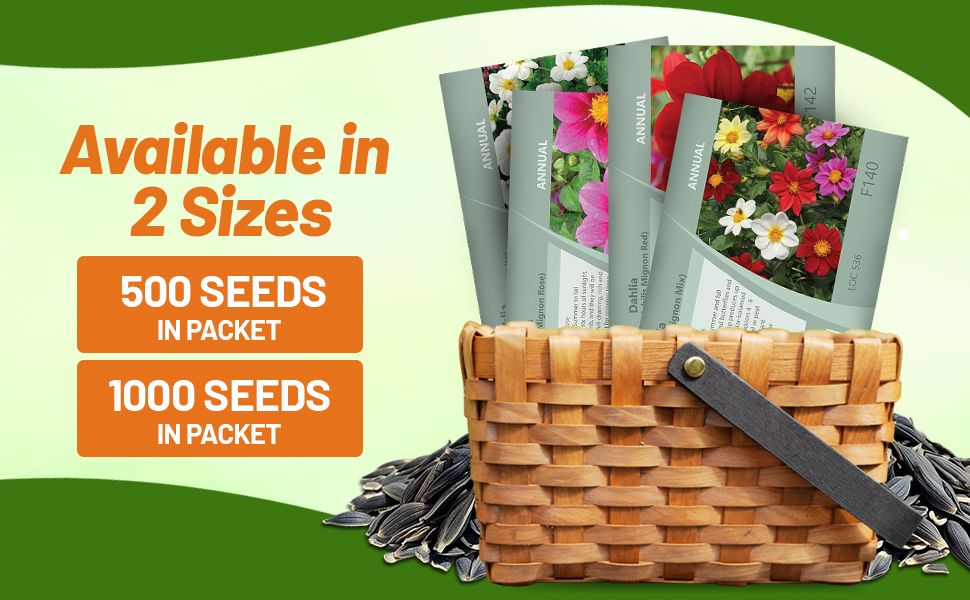
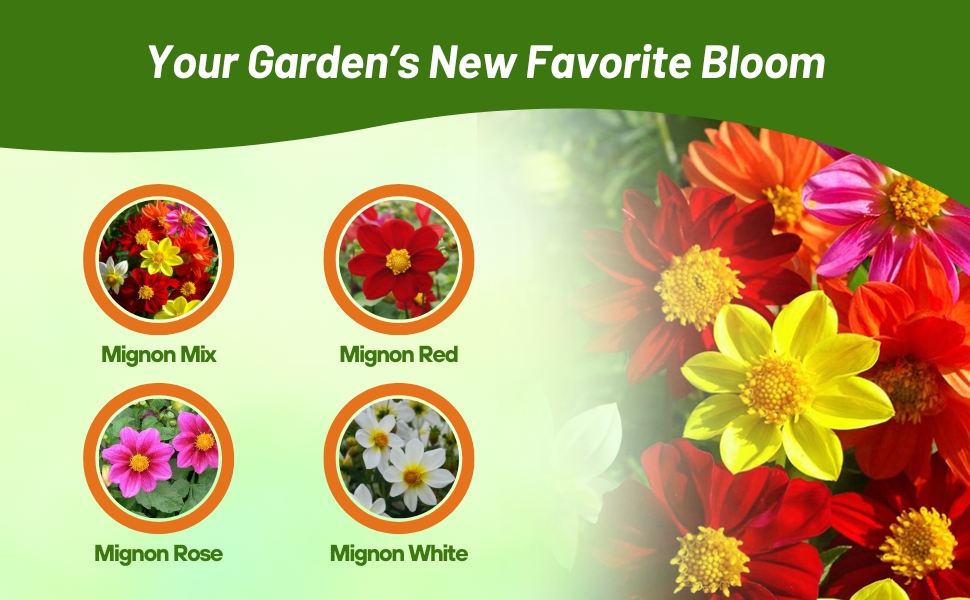

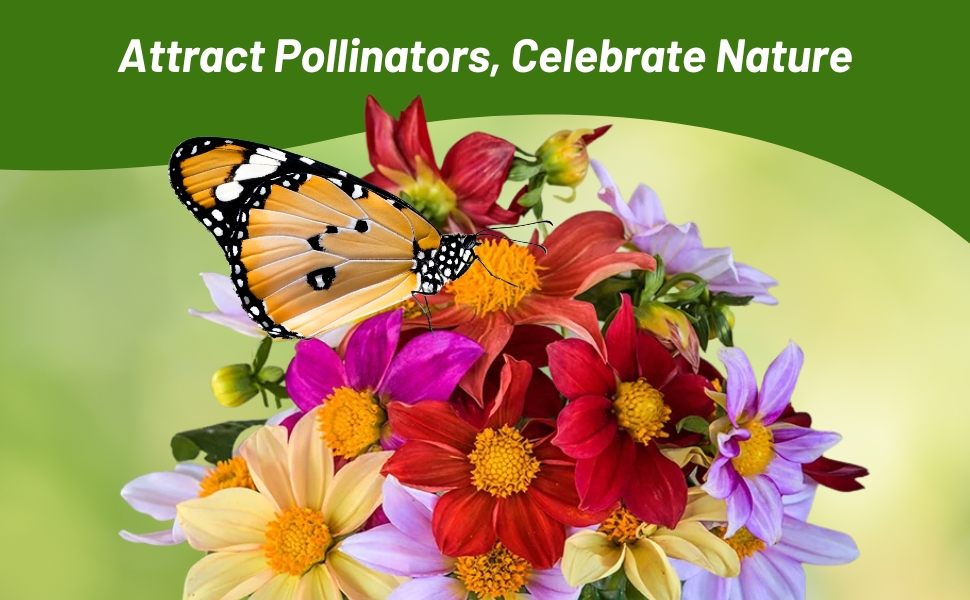
Dahlia (Dahlia Variabilis Mignon Mix) - Start Dahlia seeds and grow many of these showy annuals! Brightly colored single blooms on compact plants, make this Mignon Mix ideal for pots, tubs, borders and beds.
Common Questions
When should you plant Dahlia seeds?
When growing dahlias from seed, you want to plant dahlia seeds indoors about 6-8 weeks prior to your last frost date. If you do not know your growing zone’s last frost date, you can find it here. This will give your dahlia seeds time to start growing and to be ready to plant outside. You do not want to transplant your dahlia starts outside until all danger of frost has passed.
You can use paper towels to germinate Dahlia seeds?
For the first method, start by taking two wet paper towels and placing the dahlia seeds flat on one. Cover the dahlia seeds with one of the paper towels. Place the paper towels and seeds inside a zip lock bag. Lay the zip lock bag flat on the top of your refrigerator. Leave the seeds for 3-5 days. After that time, start checking the bag daily for signs of germination. Once the seeds have germinated, carefully plant the seedlings in a seed tray. Place the tray of seedlings under grow lights. I check the seeds starting at day 3 and plant the ones that have germinated. I then continue to check daily for about 2 weeks for germination. After that point, I toss the ones that have not germinated.
When do I transplant my Dahlia seedlings?
Once your young seedlings have true leaves growing, you will want to transplant them into larger containers. This is important so that your dahlia plants do not become root bound. Continue growing your dahlia plants indoors (or inside a heated greenhouse) until all dangers of frost have passed. Once the risk of frost has passed, you can safely plant your dahlias outdoors in a sunny spot with well-drained soil. Be sure to space your plants 12-18” apart to allow for enough space for the tubers to form. For more detailed planting instructions, check out how to grow Dahlia seed on our resources link.
How do I overwinter Dahlias?
In many parts of the country, dahlias will not survive if left in the garden over winter if it is very frosty or wet. It is therefore best to lift the tubers once the foliage has been blackened by frost. Cut the stems back to about 5 inches, then, with a garden folk, gently lift the tuber and remove the soil with your fingers. Place tubers upside down in a newspaper-lined tray so that they can dry out for a couple of weeks in a dry place. Once dry, place the tubers in a cool, frost-free place in a shallow tray of dry compost or horticultural sand. Don’t water them. They don’t need light during this time, making a dark garage the perfect store. Leave them here until it's time to pot them up again, in late March or early spring. If you live in a mild area with well drained soil, or don't have the space to lift and store dahlia tubers, you can cover the soil with a thick layer of mushroom compost and/straw, to prevent frost from penetrating the tubers. In spring simply rake away the excess compost.
How do I divide Dahlia tubers to overwinter?
Whether you choose to divide dahlia tubers before storing them for the winter or in the early spring, be sure to split them every year because of how quickly they grow. If they get too large, they will rot or become too heavy to lift and store. After digging up your tubers, split the tubers in half with sharp pruners or a sharp knife so the pieces are easier to work with. Remember that for a tuber to be viable, the eye or eyes must be connected to an unbroken tuber. Wash the clumps to remove all the excess soil. Dip the clumps into a 5% bleach-95% water solution and lay them out to dry in a cool place, such as a basement or garage for a couple of days.
What happens if you don’t dig up Dahlias?
If you live in an area where dahlias are not hardy and don’t dig them up in the fall, the tubers may be damaged or killed by freezing temperatures. This can result in the loss of the entire plant because the tubers won’t be able to produce new growth the next spring.
How do you keep Dahlias blooming?
Keeping your dahlias in a spot that gets full sunlight is ideal, though partially shaded spots can also nurture dahlia blooms. They prefer rich and well-drained soil, however, keep in mind that the soil should be evenly moist, but not excessively wet, or the roots may rot.
When do Dahlia's bloom?
In most climates, dahlias begin blooming in mid summer and continue to bloom well into fall, typically mid July through late October. These are a cut and come again flower, and they will continue to thrive and bloom all summer long with proper deadheading and the right amount of nutrients and sunlight.
Do Dahlia flowers bloom the first year they are planted?
It can sometimes feel like an eternity waiting for your dahlia seeds to bloom with flowers. Dahlia seeds usually take 100-120 days to bloom. Depending upon when you sow your seeds, you will likely see your first dahlia flowers in mid-July to early August.
How long do Dahlia plants last?
With fertile soil, proper water and consistent deadheading, dahlia plants can flower for up to 4 months. This is dependent on the zone and current weather you are experiencing within your zone.
Do Dahlias come back year after year?
Yes, since dahlias are perennials, they are able to resprout from their underground tubers to bloom in the summertime every year. If you live in a warm climate, the chances of dahlias coming back are even greater. In warmer climates, such as USDA hardiness zones 8-11, dahlias can be left in the ground over the winter and may return the following year. However, in colder climates with freezing temperatures, dahlia tubers can be damaged or even killed if not taken out of the ground and stored indoors for the winter.
Help! My Dahlia stem snapped off in the wind!
Don't worry, while this is frustrating, if the tubers are healthy then more stems will grow from the base. Give the plant a good drink and snip the severed stem down to a pair of leaf nodes, and be patient.
What size pot is best for growing dahlias?
Dahlias vary in size but generally a pot with a height and diameter of around 14 inches is sufficient for a dahlia up to 3 1/2 feet in height. Plant one dahlia plant per pot and keep it well watered. Bear in mind that you will need to stake your plant, and it's best to avoid growing very tall dahlias in pots.
Do Dahlias do better in pots or the ground?
Dahlias can be grown successfully in both pots and the ground. Your growing method choice depends on personal preference, available space, and growing conditions.
Do I need to do anything different if growing Dahlias In containers?
Small, compact dahlia varieties often do very well in pots and containers. We would recommend you do not plant large dahlia varieties with heavy heads in containers. There are a few benefits to growing dahlias in pots. They can be easily overwintered as you can pull your container in from the cold during the winter months. It is also easier to keep slugs and snails away from your plants. Dahlias grown in pots need to be watered more regularly, especially in hot weather. They also need to be fertilized more frequently because the fertilizer drains from the soil more quickly.
Will Dahlia seeds turn into tubers?
At the end of the growing seasons your dahlia seeds will have produced viable dahlia tubers that you can dig up and save for the following season. These dahlia tubers will produce identical plants to what was grown this year. Because dahlias are tender perennials (or annuals in some zones), you should dig up and store your tubers over winter.
Help! My Dahlia doesn't have any tubers?
Dahlias grown from seed typically develop into a tuber by the end of the growing season. However, if there is no tuber, simply dig up the root ball and pot the dahlia up, watering it to settle it in. Then keep it in an unheated greenhouse or similar, where it can continue growing without threat of frost. Water sparingly so the compost doesn't dry out, and then replant after frost has passed in spring. It should develop tubers the following year.
When do I pinch Dahlias?
An important step in caring for dahlias is pinching the center shoot when the plant is young. After dahlia plants reach about 1 foot tall, pinch them by snipping out 3-4 inches of the growing center branch. This process will cause the plant to redirect its energy into producing more side shoots, encouraging bushier plants, as well as increasing flower production and overall stem length.
What happens if you don’t pinch Dahlias?
If you don’t pinch your dahlias they will still grow and produce blooms. However, they may be less full than if you had pinched them. This is because the plant will grow taller and more spindly, rather than branching out and producing new shoots.
When to cut Dahlia plants?
The best time to cut dahlias is in the early morning before the heat of the day to keep them from shock and wilting. Since dahlias don’t open much after being harvested, it’s important to pick them almost fully bloomed. The best dahlias to pick have just opened, with firm strong petals. If you cut flowers that have already showed signs of wilting you will end up with petals all over the counter in short order!
How to cut Dahlia plants?
When cutting dahlias, use sharp, clean pruners or shears to make a clean cut at a 45° angle, just above the set of leaves or nodes. This will encourage the plant to produce more blooms and prevent damage to the plant. Place the cut flowers in a bucket of cool water as you are cutting from the garden. Remove all leaves from the stems and place the dahlias in a vase of water with flower food. Don’t use a flower for your arrangement if the back of the flower head looks like the petals are browning and dehydrated. Set your flower vase in a cool area out of sunlight.
How long do cut Dahlia flowers last?
The cut flowers should last anywhere from 5-7 days if properly cared for. They wilt more quickly than many flowers, but their life can be extended by cutting at the right time of day and keeping them out of heat.
Can Dahlias be used for cut flowers?
Dahlias make wonderful cut flowers for bouquets and arrangements. Keep in mind they have a very short vase life compared to many flowers, however they bloom so well that you can create bouquets all summer long!
Help! My dahlia leaves are curled and distorted!
Dahlia leaves can curl and become distorted for a number of reasons, including attacks from aphids and red spider mites, to mosaic virus and even botrytis. Inspect the plant thoroughly for signs of invertebrates and remove them, along with the leaves, and the plant should recover. If there are no signs of invertebrates then mosaic virus or botrytis may be the cause. There's no cure for this, so, sadly, you will have to destroy the plant.
Do you soak Dahlias before planting?
It’s not necessary to soak dahlias before planting because they should absorb the moisture they need from the soil. However, soaking the tubers for a short period before planting can help hydrate them and encourage the growth of healthy roots.
Why are my Dahlias all leaves and no flowers?
There could be many reasons why your dahlias are not flowering: lack of sunlight, overfertilization, improper planting depth, lack of water, or pest or disease issues.
Should I remove lower leaves from Dahlias?
Removing lower leaves from dahlias can be beneficial for promoting airflow and preventing pest and disease issues. Avoid removing more than one-third of the plant’s foliage at once to make sure the plant can still produce the energy it needs to grow and bloom successfully. Leaves are essential for photosynthesis and providing energy to the plant so don’t go overboard.
Planting Directions
TEMPERATURE
70 - 85F
AVERAGE GERM TIME
7 - 21 days
LIGHT REQUIRED
No
DEPTH
Lightly cover with peat moss
SOWING RATE
2 - 3 seeds per plant
MOISTURE
Keep moist until germination
PLANT SPACING
14 inches


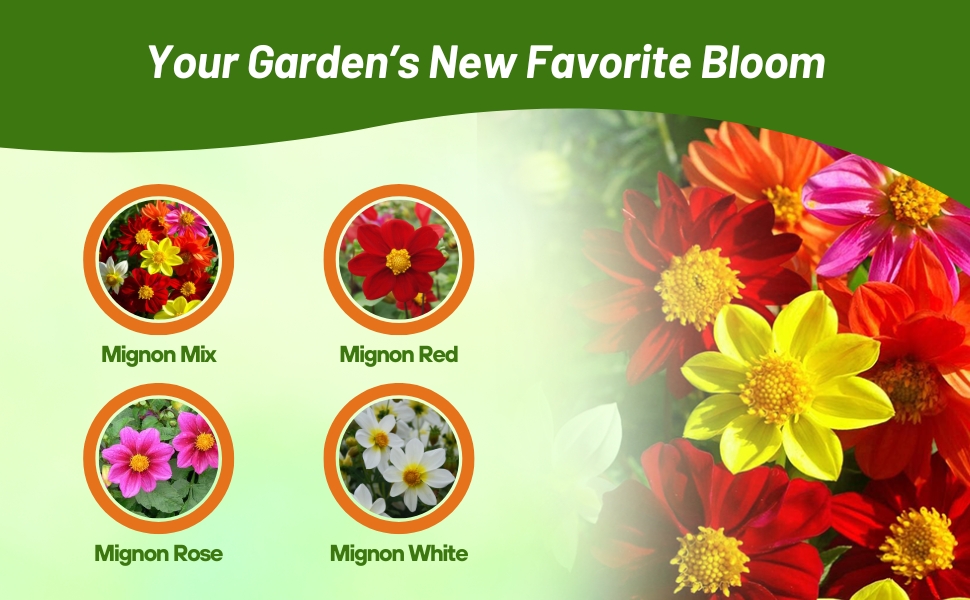
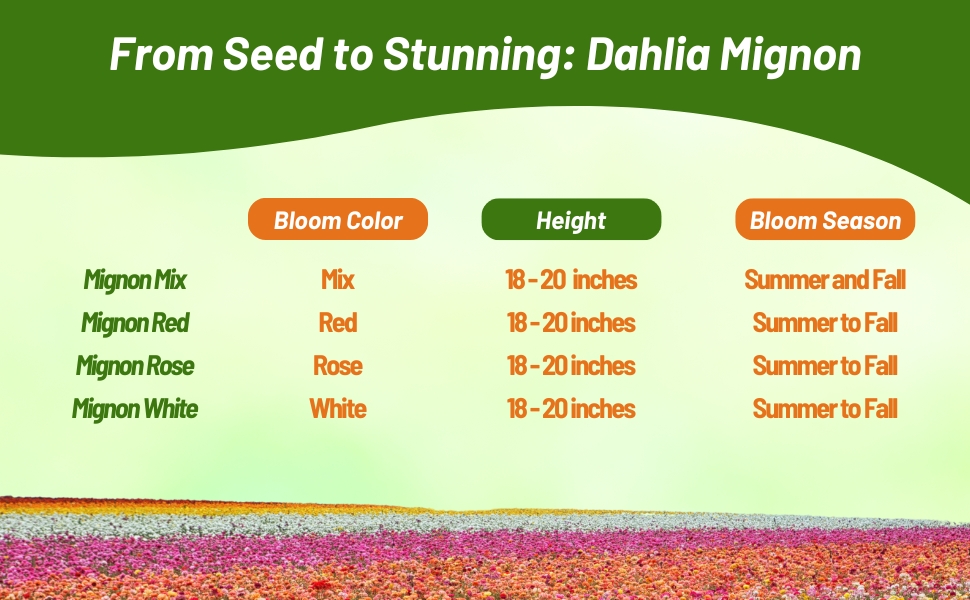
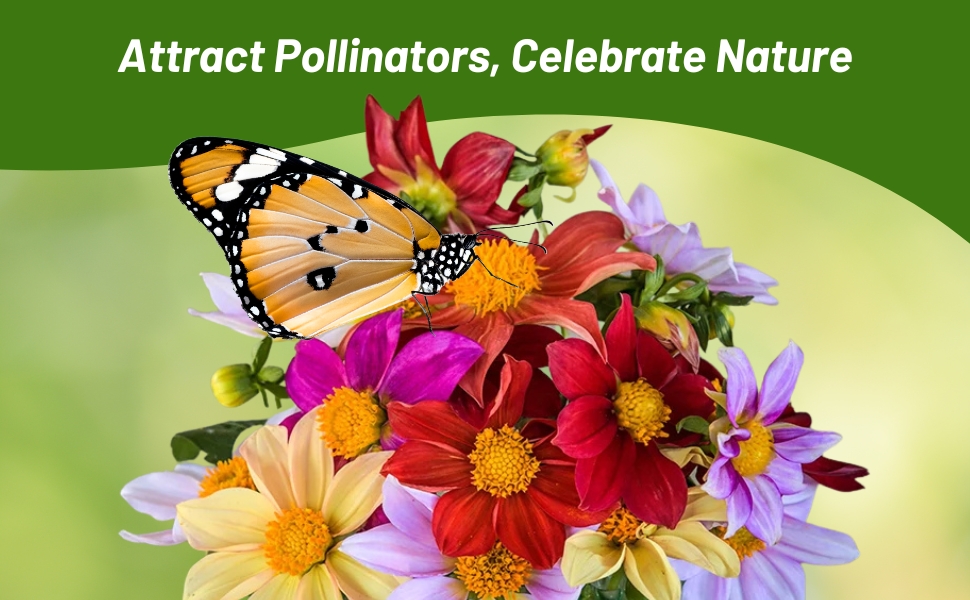
Dahlia (Dahlia Variabilis Mignon Red) - These lovely annuals can be grown for the garden border or fill your pots and baskets. There are hundreds of varieties of Dahlias in existence; we choose to carry the most popular varieties which can be grown from flower seeds.
Common Questions
When should you plant Dahlia seeds?
When growing dahlias from seed, you want to plant dahlia seeds indoors about 6-8 weeks prior to your last frost date. If you do not know your growing zone’s last frost date, you can find it here. This will give your dahlia seeds time to start growing and to be ready to plant outside. You do not want to transplant your dahlia starts outside until all danger of frost has passed.
You can use paper towels to germinate Dahlia seeds?
For the first method, start by taking two wet paper towels and placing the dahlia seeds flat on one. Cover the dahlia seeds with one of the paper towels. Place the paper towels and seeds inside a zip lock bag. Lay the zip lock bag flat on the top of your refrigerator. Leave the seeds for 3-5 days. After that time, start checking the bag daily for signs of germination. Once the seeds have germinated, carefully plant the seedlings in a seed tray. Place the tray of seedlings under grow lights. I check the seeds starting at day 3 and plant the ones that have germinated. I then continue to check daily for about 2 weeks for germination. After that point, I toss the ones that have not germinated.
When do I transplant my Dahlia seedlings?
Once your young seedlings have true leaves growing, you will want to transplant them into larger containers. This is important so that your dahlia plants do not become root bound. Continue growing your dahlia plants indoors (or inside a heated greenhouse) until all dangers of frost have passed. Once the risk of frost has passed, you can safely plant your dahlias outdoors in a sunny spot with well-drained soil. Be sure to space your plants 12-18” apart to allow for enough space for the tubers to form. For more detailed planting instructions, check out how to grow Dahlia seed on our resources link.
How do I overwinter Dahlias?
In many parts of the country, dahlias will not survive if left in the garden over winter if it is very frosty or wet. It is therefore best to lift the tubers once the foliage has been blackened by frost. Cut the stems back to about 5 inches, then, with a garden fork, gently lift the tuber and remove the soil with your fingers. Place tubers upside down in a newspaper-lined tray so that they can dry out for a couple of weeks in a dry place. Once dry, place the tubers in a cool, frost-free place in a shallow tray of dry compost or horticultural sand. Don’t water them. They don’t need light during this time, making a dark garage the perfect store. Leave them here until it's time to pot them up again, in late March or early spring. If you live in a mild area with well drained soil, or don't have the space to lift and store dahlia tubers, you can cover the soil with a thick layer of mushroom compost and/straw, to prevent frost from penetrating the tubers. In spring simply rake away the excess compost.
How do I divide Dahlia tubers to overwinter?
Whether you choose to divide dahlia tubers before storing them for the winter or in the early spring, be sure to split them every year because of how quickly they grow. If they get too large, they will rot or become too heavy to lift and store. After digging up your tubers, split the tubers in half with sharp pruners or a sharp knife so the pieces are easier to work with. Remember that for a tuber to be viable, the eye or eyes must be connected to an unbroken tuber. Wash the clumps to remove all the excess soil. Dip the clumps into a 5% bleach-95% water solution and lay them out to dry in a cool place, such as a basement or garage for a couple of days.
What happens if you don’t dig up Dahlias?
If you live in an area where dahlias are not hardy and don’t dig them up in the fall, the tubers may be damaged or killed by freezing temperatures. This can result in the loss of the entire plant because the tubers won’t be able to produce new growth the next spring.
How do you keep Dahlias blooming?
Keeping your dahlias in a spot that gets full sunlight is ideal, though partially shaded spots can also nurture dahlia blooms. They prefer rich and well-drained soil, however, keep in mind that the soil should be evenly moist, but not excessively wet, or the roots may rot.
When do Dahlia's bloom?
In most climates, dahlias begin blooming in mid summer and continue to bloom well into fall, typically mid July through late October. These are a cut and come again flower, and they will continue to thrive and bloom all summer long with proper deadheading and the right amount of nutrients and sunlight.
Do Dahlia flowers bloom the first year they are planted?
It can sometimes feel like an eternity waiting for your dahlia seeds to bloom with flowers. Dahlia seeds usually take 100-120 days to bloom. Depending upon when you sow your seeds, you will likely see your first dahlia flowers in mid-July to early August.
How long do Dahlia plants last?
With fertile soil, proper water and consistent deadheading, dahlia plants can flower for up to 4 months. This is dependent on the zone and current weather you are experiencing within your zone.
Do Dahlias come back year after year?
Yes, since dahlias are perennials, they are able to resprout from their underground tubers to bloom in the summertime every year. If you live in a warm climate, the chances of dahlias coming back are even greater. In warmer climates, such as USDA hardiness zones 8-11, dahlias can be left in the ground over the winter and may return the following year. However, in colder climates with freezing temperatures, dahlia tubers can be damaged or even killed if not taken out of the ground and stored indoors for the winter.
Help! My Dahlia stem snapped off in the wind!
Don't worry, while this is frustrating, if the tubers are healthy then more stems will grow from the base. Give the plant a good drink and snip the severed stem down to a pair of leaf nodes and be patient.
What size pot is best for growing dahlias?
Dahlias vary in size but generally a pot with a height and diameter of around 14 inches is sufficient for a dahlia up to 3 1/2 feet in height. Plant one dahlia plant per pot and keep it well watered. Bear in mind that you will need to stake your plant, and it's best to avoid growing very tall dahlias in pots.
Do Dahlias do better in pots or the ground?
Dahlias can be grown successfully in both pots and the ground. Your growing method choice depends on personal preference, available space, and growing conditions.
Do I need to do anything different if growing Dahlias In containers?
Small, compact dahlia varieties often do very well in pots and containers. We would recommend you do not plant large dahlia varieties with heavy heads in containers. There are a few benefits to growing dahlias in pots. They can be easily overwintered as you can pull your container in from the cold during the winter months. It is also easier to keep slugs and snails away from your plants. Dahlias grown in pots need to be watered more regularly, especially in hot weather. They also need to be fertilized more frequently because the fertilizer drains from the soil more quickly.
Will Dahlia seeds turn into tubers?
At the end of the growing seasons your dahlia seeds will have produced viable dahlia tubers that you can dig up and save for the following season. These dahlia tubers will produce identical plants to what was grown this year. Because dahlias are tender perennials (or annuals in some zones), you should dig up and store your tubers over winter.
Help! My Dahlia doesn't have any tubers?
Dahlias grown from seed typically develop into a tuber by the end of the growing season. However, if there is no tuber, simply dig up the root ball and pot the dahlia up, watering it to settle it in. Then keep it in an unheated greenhouse or similar, where it can continue growing without threat of frost. Water sparingly so the compost doesn't dry out, and then replant after frost has passed in spring. It should develop tubers the following year.
When do I pinch Dahlias?
An important step in caring for dahlias is pinching the center shoot when the plant is young. After dahlia plants reach about 1 foot tall, pinch them by snipping out 3-4 inches of the growing center branch. This process will cause the plant to redirect its energy into producing more side shoots, encouraging bushier plants, as well as increasing flower production and overall stem length.
What happens if you don’t pinch Dahlias?
If you don’t pinch your dahlias they will still grow and produce blooms. However, they may be less full than if you had pinched them. This is because the plant will grow taller and more spindly, rather than branching out and producing new shoots.
When to cut Dahlia plants?
When to cut Dahlia plants? The best time to cut dahlias is in the early morning before the heat of the day to keep them from shock and wilting. Since dahlias don’t open much after being harvested, it’s important to pick them almost fully bloomed. The best dahlias to pick have just opened, with firm strong petals. If you cut flowers that have already showed signs of wilting you will end up with petals all over the counter in short order!
How to cut Dahlia plants?
When cutting dahlias, use sharp, clean pruners or shears to make a clean cut at a 45° angle, just above the set of leaves or nodes. This will encourage the plant to produce more blooms and prevent damage to the plant. Place the cut flowers in a bucket of cool water as you are cutting from the garden. Remove all leaves from the stems and place the dahlias in a vase of water with flower food. Don’t use a flower for your arrangement if the back of the flower head looks like the petals are browning and dehydrated. Set your flower vase in a cool area out of sunlight.
How long do cut Dahlia flowers last?
The cut flowers should last anywhere from 5-7 days if properly cared for. They wilt more quickly than many flowers, but their life can be extended by cutting at the right time of day and keeping them out of heat.
Can Dahlias be used for cut flowers?
Dahlias make wonderful cut flowers for bouquets and arrangements. Keep in mind they have a very short vase life compared to many flowers, however they bloom so well that you can create bouquets all summer long!
Help! My dahlia leaves are curled and distorted!
Dahlia leaves can curl and become distorted for a number of reasons, including attacks from aphids and red spider mites, to mosaic virus and even botrytis. Inspect the plant thoroughly for signs of invertebrates and remove them, along with the leaves, and the plant should recover. If there are no signs of invertebrates then mosaic virus or botrytis may be the cause. There's no cure for this, so, sadly, you will have to destroy the plant.
Do you soak Dahlias before planting?
It’s not necessary to soak dahlias before planting because they should absorb the moisture they need from the soil. However, soaking the tubers for a short period before planting can help hydrate them and encourage the growth of healthy roots.
Why are my Dahlias all leaves and no flowers?
There could be many reasons why your dahlias are not flowering: lack of sunlight, overfertilization, improper planting depth, lack of water, or pest or disease issues.
Should I remove lower leaves from Dahlias?
Removing lower leaves from dahlias can be beneficial for promoting airflow and preventing pest and disease issues. Avoid removing more than one-third of the plant’s foliage at once to make sure the plant can still produce the energy it needs to grow and bloom successfully. Leaves are essential for photosynthesis and providing energy to the plant so don’t go overboard.
Planting Directions
TEMPERATURE
70 - 85F
AVERAGE GERM TIME
7 - 21 days
LIGHT REQUIRED
No
DEPTH
Lightly cover with peat moss
SOWING RATE
2 - 3 seeds per plant
MOISTURE
Keep moist until germination
PLANT SPACING
14 inches
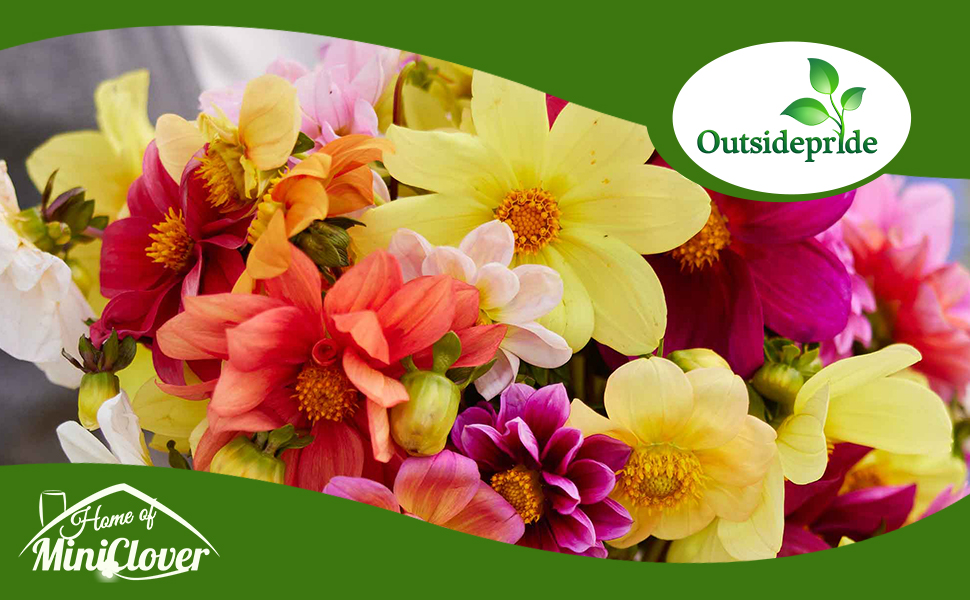
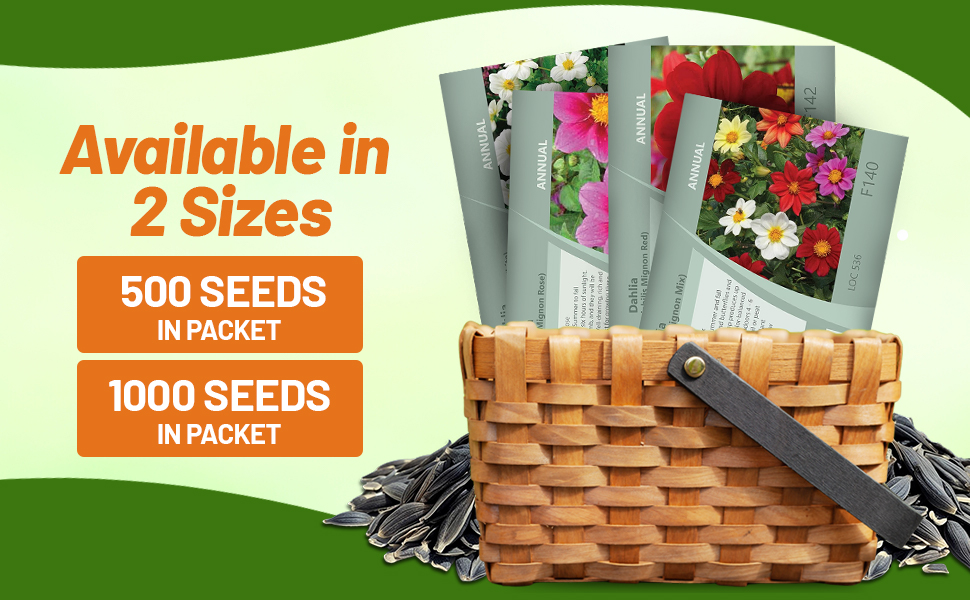


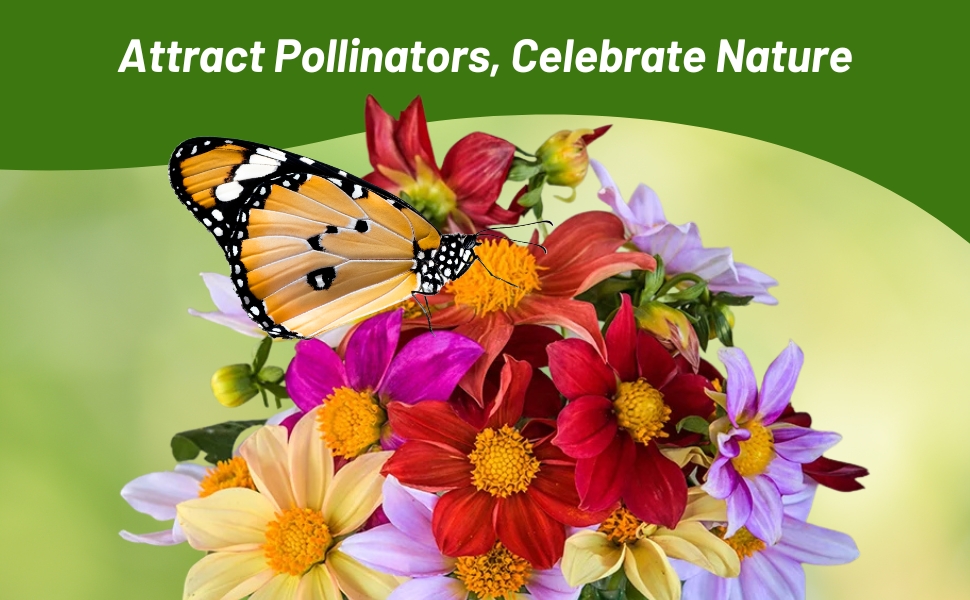
Dahlia (Dahlia Variabilis Mignon Rose) - Grow Dahlia seeds to have incredible blooms all summer long. The Mignon series has many different colors; however, none are prettier than this rose color! Mignon Dahlias are perhaps one of the most popular for pots and containers due to their low growing nature. They are also perfect for any garden border. Bees and butterflies are attracted to these wonderful flowers that can be grown from flower seeds. These annuals are a prolific bloomers and will bloom around mid summer and stay in bloom clear until frost season is most areas.
Grow Dahlia Variabilis in an area that has a minimum of six hours of sunlight. They thrive when the temperatures climb, and they will be profuse bloomers until the first frost. Well-draining, rich and fertile soil that is slightly acidic is a must for growing Dahlias. Sow the flower seeds indoors 4 - 6 weeks before the last frost. Lightly cover the seeds with soil or peat moss only the thickness of the seed itself. Transplant seedlings outdoors after danger of frost has passed.































